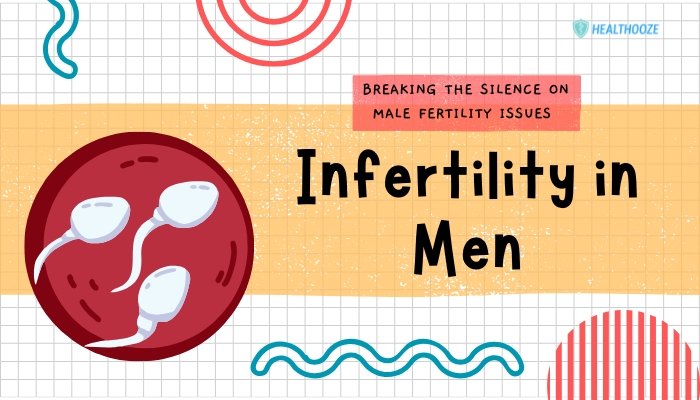Introduction
When most people think of chronic kidney disease (CKD), they imagine older adults managing high blood pressure or diabetes—two top risk factors in older populations. Yet, CKD also impacts adolescents and young adults, often remaining undetected until advanced stages.
These younger patients face a lifetime of managing dialysis or considering transplantation if progression isn’t halted early. This article shines a spotlight on the causes, warning signs, and evolving treatment strategies for CKD in youth, emphasizing the urgency of timely recognition and care to safeguard kidney function and overall well-being.
What Is Chronic Kidney Disease?
Chronic kidney disease involves a gradual reduction in kidney function, defined by decreased glomerular filtration rate (GFR) or evidence of kidney damage (e.g., protein in the urine) lasting at least three months. Over time, as the kidneys fail to filter waste and balance electrolytes effectively, complications arise, such as hypertension, anemia, bone disorders, and, ultimately, end-stage renal disease (ESRD) if left unchecked.
CKD in Younger Populations
While older adults with hypertension or type 2 diabetes form a large segment of CKD patients, pediatric and young adult CKD can stem from different etiologies—congenital malformations, hereditary disorders, and systemic illnesses. Understanding these unique causes is key to managing the condition from an early age and preventing severe complications in adulthood.
Causes of CKD in Young People
Congenital and Hereditary Factors
- Congenital Anomalies of the Kidney and Urinary Tract (CAKUT)
- Includes renal dysplasia, obstructive uropathy, or reflux nephropathy. These anomalies can impair normal kidney growth and function from birth.
- Polycystic Kidney Disease (PKD)
- Autosomal recessive PKD often presents in infancy or childhood, leading to enlarged, cyst-filled kidneys and progressive insufficiency.
- Inherited Metabolic Disorders
- Conditions like cystinosis or primary hyperoxaluria can injure the kidneys’ filtering units.
Glomerular Diseases
- Focal Segmental Glomerulosclerosis (FSGS): Scarring in kidney’s filtering segments, leading to proteinuria and potential kidney failure.
- Systemic Lupus Erythematosus (SLE): When lupus-related inflammation damages renal tissue, known as lupus nephritis.
Acquired Factors
- Obesity and Hypertension: Emerging in younger demographics, these can accelerate renal decline if not addressed.
- Chronic Infections: Unresolved UTIs or post-infectious glomerulonephritis may hamper kidney function over time.
- Drug Toxicities: Certain nephrotoxic medications (e.g., some chemotherapy agents) can cause permanent damage.
Why Is It Often Overlooked?
Subtle or Non-Specific Symptoms
Early-stage CKD rarely presents obvious signs. Mild fatigue or changes in urinary patterns might be attributed to stress or adolescent growth changes. Many are diagnosed incidentally when labs show abnormal creatinine or proteinuria.
Limited Pediatric Screening
While adult guidelines recommend routine screening for kidney issues in those with hypertension or diabetes, systematic checks for younger populations are less standardized—especially if no known hereditary factor is flagged.
Socioeconomic Barriers
Healthcare disparities may block consistent follow-up or advanced imaging when early suspicion arises. Underinsured families might avoid testing unless severe symptoms manifest.
Recognizing Warning Signs in Younger Patients
Potential Clues
- Persistent Swelling: Edema in ankles or around the eyes can signal fluid retention from inadequate kidney function.
- Excess Protein or Blood in Urine: Detected via routine dipstick tests or microalbumin checks.
- Elevated Blood Pressure: Hypertension in adolescence often coexists with underlying renal disease.
- Slowed Growth: Chronic illness can disrupt normal growth curves, particularly when nutrient and hormone balances are off.
Medical Evaluation
- Blood Tests: Serum creatinine, BUN (blood urea nitrogen), and eGFR to gauge overall kidney performance.
- Urine Analysis: Protein, RBC casts, or other irregularities hint at glomerular damage.
- Ultrasound: Identifies structural anomalies (like small or malformed kidneys) and rules out obstructive causes.
Implications for Youth with CKD
School and Lifestyle
- Fatigue: Anemia or fluid imbalances hamper energy, making it harder for teenagers to keep up academically or socially.
- Dietary Restrictions: Watchful intake of sodium, potassium, or phosphate modifies typical adolescent eating patterns and social activities.
- Missed Days: Frequent checkups, potential hospitalizations, or dialysis disrupt daily routines.
Psychosocial Stress
- Self-Identity and Peer Pressure: Navigating adolescence is tough, and living with a chronic condition can intensify feelings of being “different.”
- Emotional Strain: Anxiety over disease progression, frustration with diet or medication demands, and fear of potential dialysis or transplant.
- Family Dynamics: Caregivers might face financial burdens and job flexibility issues, while siblings can feel overshadowed.
Transition to Adult Care
As patients move from pediatric nephrologists to adult healthcare systems, they must assume more responsibility for medication adherence, scheduling, and lifestyle choices. This transition is often fraught with confusion if no structured handoff is established.
Treatment and Management
Slowing Disease Progression
- Medications:
- ACE inhibitors or ARBs can reduce proteinuria, protect renal function.
- Diuretics or other blood pressure-lowering drugs manage fluid overload or hypertension.
- Nutritional Guidance:
- Adequate protein for growth but limited to avoid extra strain on kidneys if advanced.
- Restricting sodium, monitoring potassium, phosphate if levels rise.
Lifestyle Adjustments
- Physical Activity: Encouraged at moderate levels to control weight, blood pressure, and overall wellness.
- Smoking Avoidance: Tobacco accelerates kidney damage, plus worsens cardiovascular risks.
- Staying Hydrated: Balanced fluid intake per nephrologist’s advice. Overdrinking or dehydration can be harmful.
Renal Replacement Therapies
- Dialysis: Some adolescents or young adults eventually need hemodialysis or peritoneal dialysis, bridging them until a transplant is possible.
- Transplantation: A kidney transplant offers the best chance for near-normal function, but requires immunosuppressants, which bring their own set of side effects.
Advances and Research Hopes
Genetic Understanding
Technological strides in gene sequencing now help identify monogenic causes (like certain tubulopathies). Pinpointing the exact mutation shapes personalized interventions and fosters new drug discovery.
Stem Cell and Regenerative Therapies
Some labs explore whether induced pluripotent stem cells (iPSCs) could repair or replace failing kidney tissues. Though still theoretical, success here might drastically reduce dialysis dependence.
Cardiovascular Focus
Because CKD often parallels cardiovascular disease, integrated care that addresses heart and vascular health early can forestall complications and mortality later in life.
Overcoming the Underrecognition
School and Community Awareness
Teaching students, teachers, and local pediatricians about early kidney disease signs fosters earlier detection. Just as kids are screened for vision or hearing problems, some advocate for routine urine screening in adolescents at risk.
Policy and Advocacy
- Nephrology Societies: Lobby for pediatric CKD awareness, ensuring state-level or national programs subsidize advanced testing or treatment.
- Patient Groups: Support networks (e.g., from the National Kidney Foundation) can unify parents or young patients, sharing coping strategies and fundraising for research.
Lifespan Perspective
Recognizing that many pediatric CKD patients will reach adulthood with partial or severely compromised kidney function underscores the need for long-term transition clinics and robust adult nephrology care.
Conclusion
Chronic kidney disease among teenagers and young adults, once overshadowed by an assumption that kidney problems primarily afflict older people, now demands increasing attention. Whether from congenital anomalies, hereditary issues, or conditions like obesity and hypertension, CKD in youth requires early detection, comprehensive management, and an emphasis on preventing progression. By boosting awareness, ensuring educational and healthcare resources, and advancing research into novel therapies, we can offer a more hopeful future—where young individuals with kidney challenges can thrive without fear of early renal failure. Ultimately, bridging pediatric and adult nephrology fosters continuity, helping these patients navigate life’s milestones with kidney health firmly in check.
References
- https://www.kidney.org/
- North American Pediatric Renal Trials and Collaborative Studies (NAPRTCS). Annual reports on pediatric renal disease.
- Kidney Disease: Improving Global Outcomes (KDIGO) guidelines for children with CKD.
- Chavers BM, Rheault M, Foley RN. Medical care disparities in pediatric CKD. Pediatr Nephrol. 2020.







